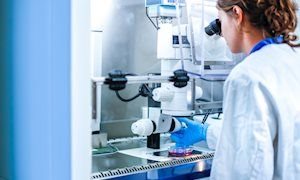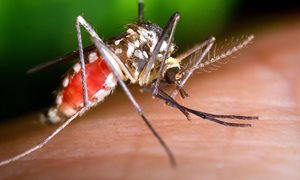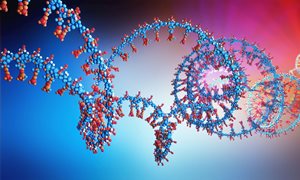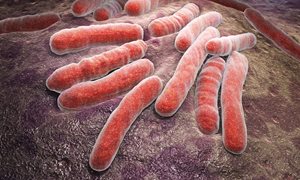
After the Neolithic, European populations showed an increase in height and intelligence, reduced skin pigmentation and increased risk of cardiovascular disease due to genetic changes that lowered concentrations of 'good' HDL cholesterol. The changes reflect ongoing evolutionary processes in humans and highlight the impact the Neolithic revolution had on our lifestyle and health, write researchers from Nijmegen and Hannover in Frontiers in Genetics. Research of these past events offers interesting starting points for today's science and health care.
Just like plants, animals and other organisms, humans are dynamic organisms with variable traits. Look at how humans behave and their appearance and you will see differences in skin colour, eating habits, susceptibility to diseases, height and so on. Such external features are called 'phenotype'. This appearance (phenotype) can be influenced by, for example, genetic factors, social and cultural habits, eating behaviour and environmental factors.
Nijmegen scientists, in cooperation with colleagues from the Helmholtz Center for Infection Research (HZI, Hannover), have investigated whether they could trace the development of some complex human traits of modern Europeans from, say, 50,000 years B.C. to the present. These are complex traits such as height and intelligence. In this case, ‘complex’ means this trait is not determined by one gene but by dozens or even hundreds of genes. Each of these genes has only a very small effect on such a trait.
Genetic archaeology
How can you track down all the genes that interfere with height? This can be done with a technique called GWAS: genome-wide association studies. You take all human genes (genome) to see which genes have an effect on height. It’s not a causal relationship (you do not know exactly how those genes influence height), but a statistical relationship (it is always the same genes that show up when height is determined). In a large population study, you can get a list of genes involved in human height and compare this list of genes of modern Europeans with those of our distant ancestors. Archaeological research has unearthed already more than 800 people whose DNA has been mapped. Ultimately, this reference gives you a kind of timeline of European height genes, in which you can search for changes and turning points along the way.
Speeding up evolutionary processes
The researchers analyzed not only height but also other complex features such as skin pigmentation, weight/BMI, lipid metabolism, intelligence and cardiovascular disease. "In general, we see a clear change of some of these traits before and after the Neolithic Revolution, as if there was an acceleration of evolutionary processes then," says Mihai Netea from Radboudumc. The Neolithic (New Stone Age) is an important period in human development, often referred to as the Neolithic Revolution. Wandering hunter-gatherers slowly disappeared and were replaced by locally settled farmers, resulting in a completely different lifestyle, change of diet, and different socio-cultural customs.
Height, skin colour, cholesterol
Yang Li, researcher at the HZI: "During this transitional period, we not only found a clear change in body height, but in skin colour as well. Europeans, for example, have retained their dark skin colour for a remarkably long time, and it really lightens during this period. This may be due to migration from populations in the Middle East with less pigmented skin. In many genes involved in metabolism and the risk of cardiovascular disease we saw little change, only with one obvious exception: HDL cholesterol - often called 'good' cholesterol - shows a clear decrease. It increases the risk of arthrosclerosis, but there’s a link with intelligence as well."
Intelligence
There’s a change in genetic factors that leads to the development of coronary artery disease by means of a decrease in HDL cholesterol. This raises the question, what is the evolutionary advantage of this lower HDL-cholesterol concentration? Li: "Perhaps it is in the development of cognitive functions, because cholesterol is fundamental to the development and functioning of the brain. Some minimal changes in genes - called polymorphisms - in cholesterol metabolism have been linked to cognitive functions, while variations in levels of HDL and LDL have been linked to changes in intelligence, learning and memory. These are hypotheses, not proofs, but illustrate the importance of this research, in which we are exploring factors that can influence the development of complex human traits."
Useful for the present
This evolutionary research into the change of human traits in Europeans past can also be useful for the present. Netea: "It helps us to understand the physiology of contemporary humans and we may be able to tailor public health measures better to specific populations. Research has learned, for example, that Asian populations already have an increased risk of metabolic and cardiovascular complications at a lower BMI compared to European populations. We can take that into account in prevention strategies. Look at the mass rural-urban migration, which is accompanied by major changes in social and cultural habits, eating behaviour and environmental factors. What will it mean for important human physiological traits, for evolutionary pressures on human traits and genes, and human diseases in modern societies?"
Paper in Frontiers in Genetics: Evolutionary Trajectories of Complex Traits in European Populations of Modern Humans - Yunus Kuijpers, Jorge Domínguez-Andrés, Olivier B. Bakker, Manoj Kumar Gupta, Martin Grasshoff, Cheng-Jian Xu, Leo A.B. Joosten, Jaume Bertranpetit, Mihai G. Netea, Yang Li
-
Want to know more about these subjects? Click on the buttons below for more news.
More information
Pieter Lomans

persvoorlichter
Related news items

Grants for research on magnesium deficiency and malaria Vidis for Felix Hol and Jeroen de Baaij
1 July 2022 Radboudumc researchers Jeroen de Baaij and Felix Hol both receive an NWO Vidi grant for their research, respectively on magnesium deficiency in type 2 diabetes and on malaria. read more
Field research on malaria vaccine offers unexpected surprise
23 May 2022Field research on the effectiveness of a malaria vaccine, came up with unexpected results for an international group of researchers including Benjamin Mordmüller of Radboudumc. The vaccine evokes a broader response against malaria proteins than there are in the vaccine.
read more
Rubicon grants awarded to three RIMLS researchers
19 April 2022Three researchers have received Rubicon funding from NWO/ZonMw. This will enable Elke Muntjewerff, Laura de Vries and Laurens van de Wiel to do research at a foreign research institute for the next two years.
read more
Immunogenetic studies in diverse populations are essential Clear immunological differences between populations in Europe and Africa
15 February 2022 Genetic factors that partly determine host defenses sometimes differ significantly between people and populations. This is shown in a publication in the American Journal of Human Genetics by researchers from the Netherlands, Tanzania and India. read more
NIH grant for follow-up research on tuberculous meningitis
10 February 2022Met subsidie van het Amerikaanse NIH gaat With a grant from the U.S. NIH, Reinout van Crevel will continue to unravel the disease process of tuberculous meningitis.
read more
